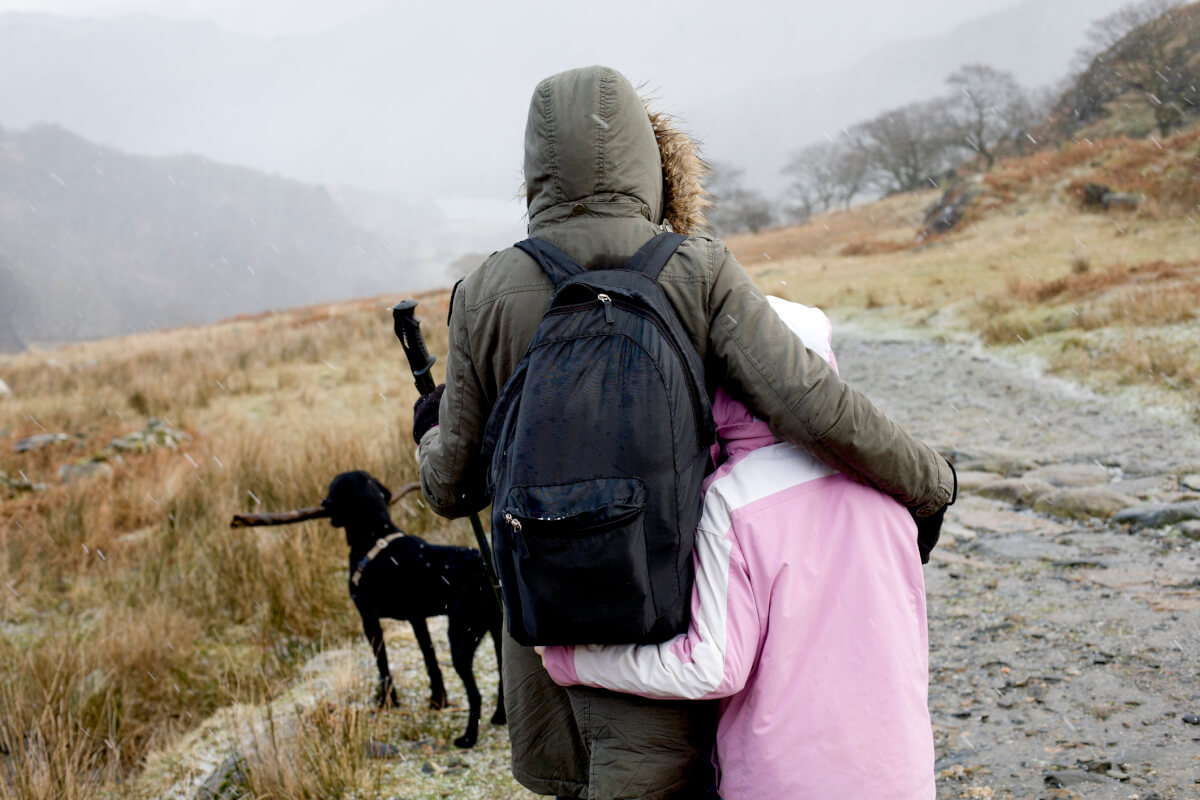All across the globe, dogs have served as mankind’s faithful canine companion for thousands of years, earning them the well-deserved reputation of “man’s best friend”. But during a disaster or an emergency situation where it’s every man for himself, will you (or should you) have time to be worrying about Fido?
WHAT’S IN IT FOR YOU?
When it’s time to hightail it out of town, taking your pooch with you has a number of advantages. Besides the obvious emotional attachment we have with our pets, dogs can serve as:
- Alarm
Most canines, no matter the size, will bark against intruders and warn you of their presence. This can provide you with ample time to prepare or escape when needed. Often, a simple growl or bark alone can also cause the intruder to hesitate or even change their mind knowing you are alerted to their presence and you have canine teeth to back you up.
- Defense
Larger dogs can be a good deterrent against people who intend to attack you. In the event a physical altercation does happen, your hound can defend you physically. Some breeds not only pose an intimidating presence, they are even known to go for the neck, or what’s known as a throat clamp, or take other aggressive protective measures.
- Companionship
An emergency or survival situation will be stressful. Having your dog with you can help lessen stress, boost your morale, and provide the kids a companion they can play with.

HUNKERING-DOWN OR BUGGING-OUT?
Whether you’re staying in your home or making a run for your emergency shelter, each scenario presents its own challenges when with an animal. Here are some things to consider so you can prepare better
- Bugging-In
You’ll have to make sure you have enough food and water for your canine companion. You can buy dry food in bulk and store it in moisture-proof containers to make it last. Store water in separate containers, marked with your dog’s name, and rotate them regularly. Canned wet food can also be stored for a long time, but make sure to rotate them and open the oldest ones first.

If it’s available in your area, having your pet chipped can be a good option, but you’ll still have to keep their important records in a waterproof bag and within easy reach. Keep waste bags around that you can use to collect and dispose your dog’s waste so you can minimize the chances for diseases.
- Bugging-out
This is more difficult and presents its own set of challenges. However, with some preparations, keeping your dog with you can still be possible in such a situation, and may even be beneficial.
Give them their own bug-out bag
One concern when it comes to bugging out with your pet is carrying the supplies they’ll need, because it will take up space in your own bag and add weight to your load. Fortunately, there are packs available that your tail-wagger can wear so they can carry their own supplies.

Your four-legged friend will need food and water for at least three days. For a rough estimate, a dog consumes anywhere between 1-2 ounces of water daily for every pound of their weight. So, if your Labrador weighs 70 pounds, expect it to drink at least half a gallon of water per day.
You’ll also have to bring their medications (if applicable). A canine’s medical kit is very similar to yours, so you can use your own med kit when your pet companion needs it. However, it’s best to have a separate med kit for your dog which can also act as a back-up to your own kit.
Your pet’s paperwork won’t add much weight and bulk to your stuff, and can be very handy in situations where you’ll have to group up with others. Some people may be wary of dogs that can spread diseases or infections, and being able to show your mutt’s shots can ease worries about these. Worst case scenario, you might have to muzzle your hound, so it won’t be a bad idea to bring one with you.
Aside from these, you’ll also need to bring a leash and a collar with you to make sure your dog won’t run off, particularly when you’re trying to stay low-key.
OTHER CONSIDERATIONS
Whether you’re bugging in or bugging out, make sure your dog has a collar with a tag that contains their details. Also, make a note of the animal shelters in your area, or places where you can look in case he or she gets lost.
If you really want to prepare your animal companion for a survival situation, you can consider training them or have them trained by a professional. Getting them to keep quiet on command can be helpful if you must sneak out. You can also train your dog to hunt and help with finding food. At the very least, getting them to be obedient and to stay put when needed is useful and will keep you from spending too much time and energy chasing or looking for your loyal companion.
FINAL WORD
If you plan well enough in advance, keeping your dog with you when bugging-in is relatively easy and provides you the benefits of added security, a stress reliever, or simply a buddy who can hunker down with you. Bugging-out presents its own unique set of challenges, but with some work, is still doable.

Whatever you decide on, the fact is your animal companion will have its own basic needs and requirements, and how easy or difficult it will be to keep Fido with you will depend on how much you prepare for that event.


